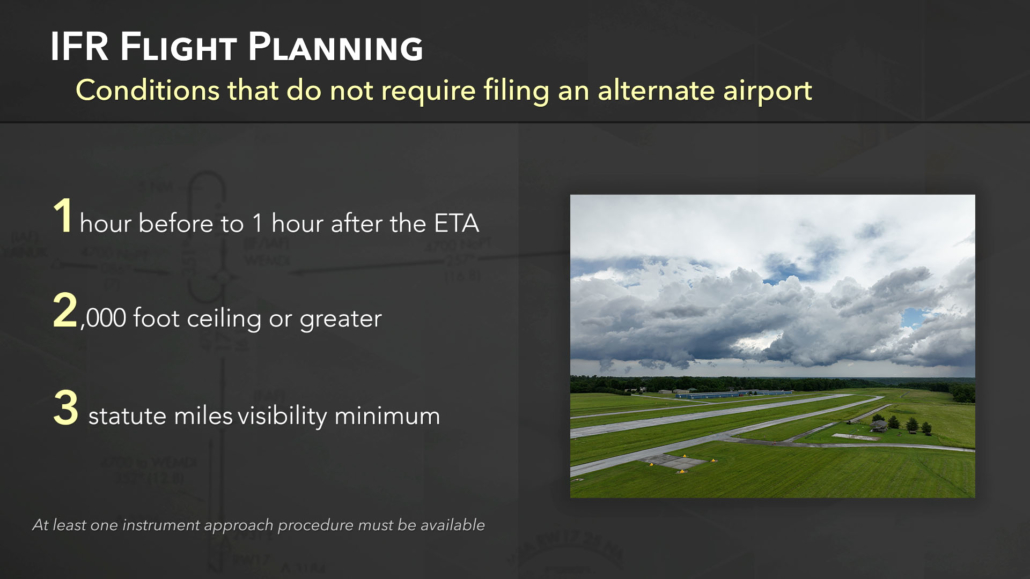Ask the IFR Expert: When is an IFR Alternate Required?
|
Getting your Trinity Audio player ready...
|
Even when it’s not required by regulation, I almost always file an alternate airport when planning IFR flights—especially for cross-country trips. Why? Because weather isn’t the only thing that can throw a wrench in your plan. Runway closures, fuel availability, equipment outages, and unforecast changes can all make your destination unavailable. Having an alternate—and thinking through the options ahead of time—is just smart IFR flying.
So when is an alternate actually required?
14 CFR 91.169 spells it out, and many pilots remember it with the “1-2-3 rule”:
If, from 1 hour before to 1 hour after your estimated time of arrival at your destination, the forecast weather is at least a 2,000-foot ceiling and 3 statute miles visibility, you are not required to file an alternate airport.

That means both the ceiling and visibility must meet those minimums within that two-hour window. If either drops below those thresholds—even briefly—you’ll need to file an alternate.
And don’t forget: the destination must also have at least one instrument approach procedure available. If it doesn’t, you must file an alternate regardless of the forecast.
While this may seem straightforward, real-world conditions are rarely perfect. Forecasts aren’t guarantees, and last-minute changes can catch you off guard. That’s why I treat the alternate not just as a regulatory requirement, but as part of my personal minimums.
Take Our Survey
- Video Tip: Instrument Scanning Technique - August 8, 2025
- How to Transition to IFR flying with an Instrument Rating - August 5, 2025
- Ask the IFR Expert: When is an IFR Alternate Required? - August 1, 2025



Leave a Reply
Want to join the discussion?Feel free to contribute!